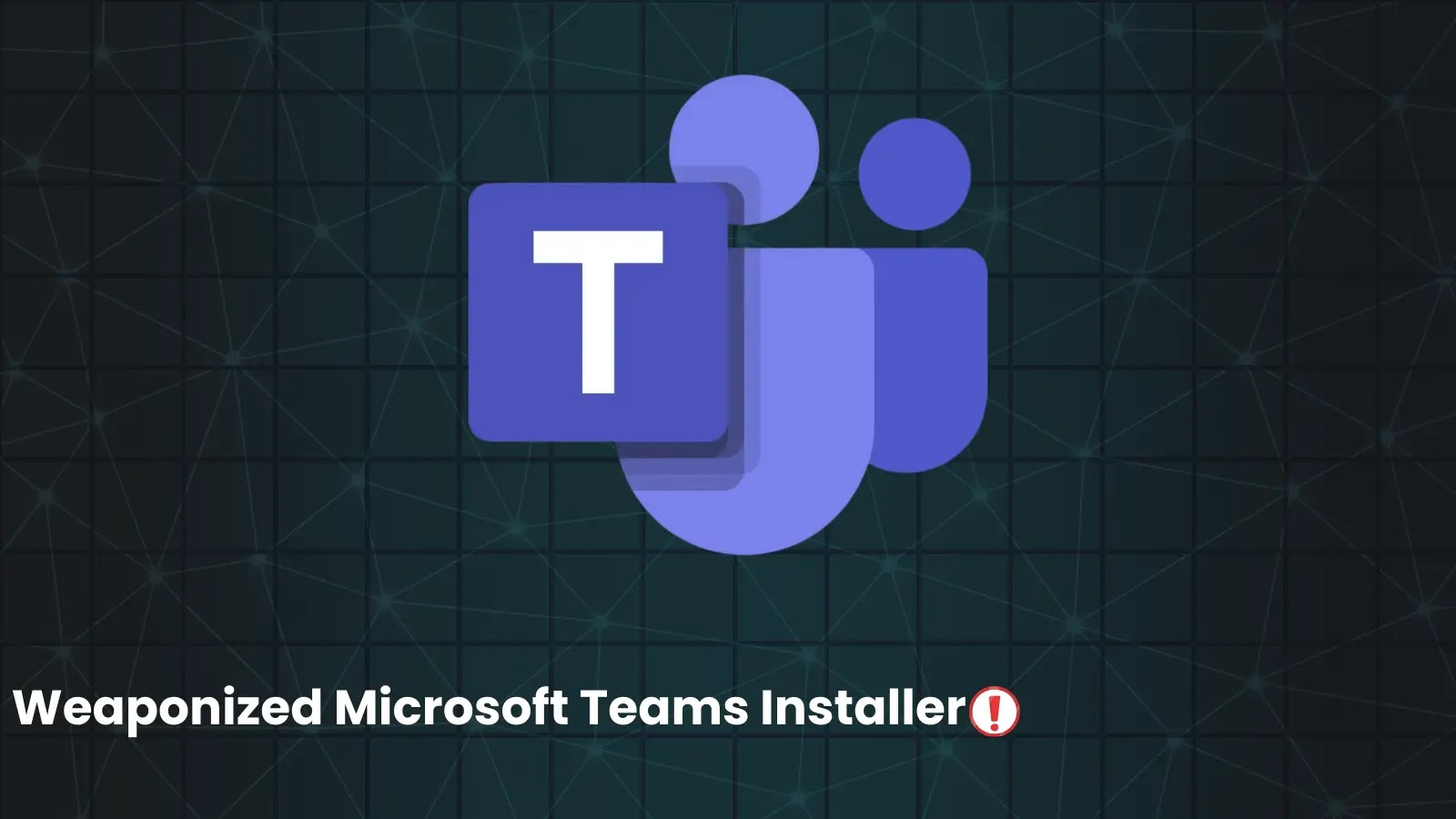
Hackers use Weaponized Microsoft Teams Installer to Compromise Systems With Oyster Malware
In a concerning development for enterprise security, a sophisticated malvertising campaign has been observed exploiting a trusted communication platform: Microsoft Teams. This campaign weaponizes seemingly legitimate Microsoft Teams installers to deploy the insidious Oyster backdoor malware, targeting corporate systems through cunning social engineering and robust technical evasion.
The attackers leverage poisoned search engine results, leading unsuspecting users to malicious downloads. Further complicating detection, these fake installers utilize abused code-signing certificates, lending a false sense of legitimacy to the malicious payloads. This multi-stage attack highlights the evolving tactics of threat actors and the persistent need for robust cybersecurity defenses.
The Malvertising Deception: How It Starts
The initial phase of this attack relies heavily on malvertising – malicious advertising designed to appear as legitimate search results. When users search for “Microsoft Teams download,” they are presented with seemingly official links that, in reality, lead to compromised websites. These sites host the weaponized installers, designed to mimic the genuine Microsoft Teams application.
This tactic preys on user trust and the common practice of downloading software directly from search engine links. The attackers meticulously craft these misleading advertisements to rank highly, increasing the likelihood of user interaction and subsequent infection.
Oyster Malware: A Backdoor into Your Network
Once downloaded and executed, the weaponized installer doesn’t install Microsoft Teams; instead, it delivers the Oyster backdoor malware. A backdoor like Oyster provides attackers with persistent, unauthorized access to a compromised system. This access can be used for a variety of malicious activities, including:
- Data exfiltration: Stealing sensitive corporate data.
- Lateral movement: Spreading to other systems within the network.
- Further payload delivery: Installing additional malware, such as ransomware.
- Establishing command and control (C2): Communicating with attacker-controlled servers.
The stealthy nature of a backdoor like Oyster makes it particularly dangerous, as its presence may go undetected for extended periods, allowing attackers ample time to achieve their objectives.
Abused Code-Signing Certificates: The Veneer of Legitimacy
A critical component of this campaign’s success is its use of abused code-signing certificates. Code signing is a security measure designed to assure users that software comes from a trusted source and has not been tampered with since it was signed. However, when attackers obtain or steal legitimate code-signing certificates, they can sign their malicious software, making it appear authentic to security tools and users alike.
This adds a layer of sophistication to the attack, making it harder for traditional antivirus and endpoint detection and response (EDR) solutions to flag the malicious installer immediately. The presence of a valid certificate can bypass some security checks, allowing the malware to execute on systems that might otherwise block unsigned or suspicious executables.
Neutralizing the Threat: The Role of ASR Rules
Fortunately, Microsoft Defender’s Attack Surface Reduction (ASR) rules proved instrumental in neutralizing this particular campaign. ASR rules are designed to prevent actions and apps that are commonly used by malware to compromise machines. In this instance, ASR rules effectively blocked the Oyster malware from establishing contact with its command-and-control server.
This prevention of C2 communication is a critical step in halting an attack. Without the ability to communicate with its operators, the backdoor malware is largely incapacitated, unable to receive commands, exfiltrate data, or download further malicious payloads. This highlights the effectiveness of proactive security measures that identify and block malicious behaviors rather than solely relying on signature-based detection.
Remediation Actions and Best Practices
Defending against sophisticated malvertising campaigns and backdoor malware like Oyster requires a multi-layered security approach. Here are actionable steps organizations should take:
- Implement Strong Email and Web Filtering: Block access to known malicious websites and filter out phishing attempts that could lead to malvertising.
- Educate Users on Malvertising: Train employees to recognize suspicious search results and advertisements, and to always verify the authenticity of download sources. Emphasize downloading software only from official vendor websites.
- Enforce Software Download Policies: Restrict employees from installing unauthorized software and enforce policies requiring approval for new applications.
- Utilize Endpoint Detection and Response (EDR): Deploy EDR solutions that can monitor endpoint activity, detect suspicious behaviors, and respond to threats in real-time.
- Configure and Monitor Microsoft Defender ASR Rules: Ensure ASR rules are properly configured and actively monitored to prevent common attack techniques. Regularly review and update these rules.
- Maintain Up-to-Date Security Software: Keep operating systems, antivirus software, and all other security tools patched and updated to the latest versions.
- Implement Application Whitelisting: Restrict the execution of unauthorized applications by allowing only approved software to run on corporate systems.
- Regularly Back Up Data: Maintain frequent and secure backups of all critical data to facilitate recovery in the event of a successful compromise.
- Review Code-Signing Certificate Usage: Implement processes to verify the legitimacy of code-signing certificates and investigate any anomalies in signed executables.
Recommended Tools for Detection and Mitigation
| Tool Name | Purpose | Link |
|---|---|---|
| Microsoft Defender for Endpoint | Advanced threat protection, EDR, and ASR rule enforcement. | Microsoft Website |
| OSINT Tools (e.g., URLVoid, VirusTotal) | Analyzing suspicious URLs and file hashes for known threats. | URLVoid, VirusTotal |
| Application Control Solutions | Enforcing application whitelisting and preventing unauthorized software execution. | (Varies by vendor, e.g., Microsoft Defender Application Control) |
| Network Intrusion Detection/Prevention Systems (NIDS/NIPS) | Monitoring network traffic for C2 communication and malicious activity. | (Varies by vendor) |
Key Takeaways
The weaponized Microsoft Teams installer campaign serving Oyster malware underscores the sophisticated tactics threat actors employ to breach corporate networks. From malvertising and abused code-signing certificates to deploying persistent backdoors, each layer of the attack is meticulously designed to evade detection. The successful neutralization by Microsoft Defender’s ASR rules is a testament to the importance of proactive, behavioral-based security measures. Organizations must remain vigilant, prioritize user education, and implement comprehensive endpoint and network security strategies to defend against these evolving threats.
While a specific CVE for this campaign’s methods hasn’t been publicly disclosed for the overarching campaign, the techniques involved touch upon common attack vectors. For instance, the abuse of code-signing certificates can sometimes relate to issues like CVE-2023-21782 (related to certificate chain validation), highlighting broader vulnerabilities in certificate handling. The use of malvertising and social engineering is an ongoing threat that does not typically receive a specific CVE, but forms the basis of many initial access brokers.





